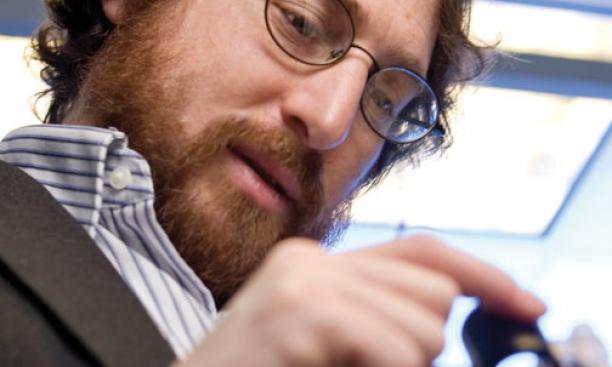

A NEW APPROACH Capturing images using standard microscopy can be a tedious process of constant refocusing that requires movement of a microscope element. But a new approach that uses sound can focus a lens much faster. “The best example of a variable lens is the one in our eyes, which can refocus about 30 times per second,” said Craig Arnold, associate professor of mechanical and aerospace engineering, who developed the technology. “The lens we developed can focus 10,000 times faster” than the eye can, he said.
The Tunable Acoustic Gradient (TAG) lens is the first to take advantage of the speed of sound to change the pattern of light that passes through an object. A sound wave is sent into a liquid-filled chamber to establish a pattern that bends the light passing through it. The fast-moving sound allows for microsecond focusing control. The lens can be used in standard microscopes.

3-D APPLICATIONS Because the lens can refocus so quickly, it is able to capture an in-focus image of every part of an object being imaged. “This turns the challenge of 3-D imaging from being a limitation of how fast the lens can focus to how fast the camera can capture an image,” Arnold explained. The technology has led to a Princeton-based startup, TAG Optics, that makes custom lenses for high-resolution biological and industrial imaging and scanning applications. One example is high-throughput imaging of tumor sections, a task that typically is time-consuming because of the need to constantly refocus.
PUSHING THE TECHNOLOGY FURTHER An applied physicist, Arnold has been working to understand the physics of the sound-based technology since 2006. “It was only after we really understood how the lens worked that we were able to figure out how to best apply this technology to solve real-world problems,” he said. The application has so far been a success — the TAG lens won the international Prism Award for photonics innovation, recognizing it as the best new optical component brought to market in 2012. Besides continuing to focus on utility, Arnold and his laboratory are returning to the fundamental science questions. “Studying science is like going down the rabbit hole,” he said. “There are always new questions to think about and explore.”
